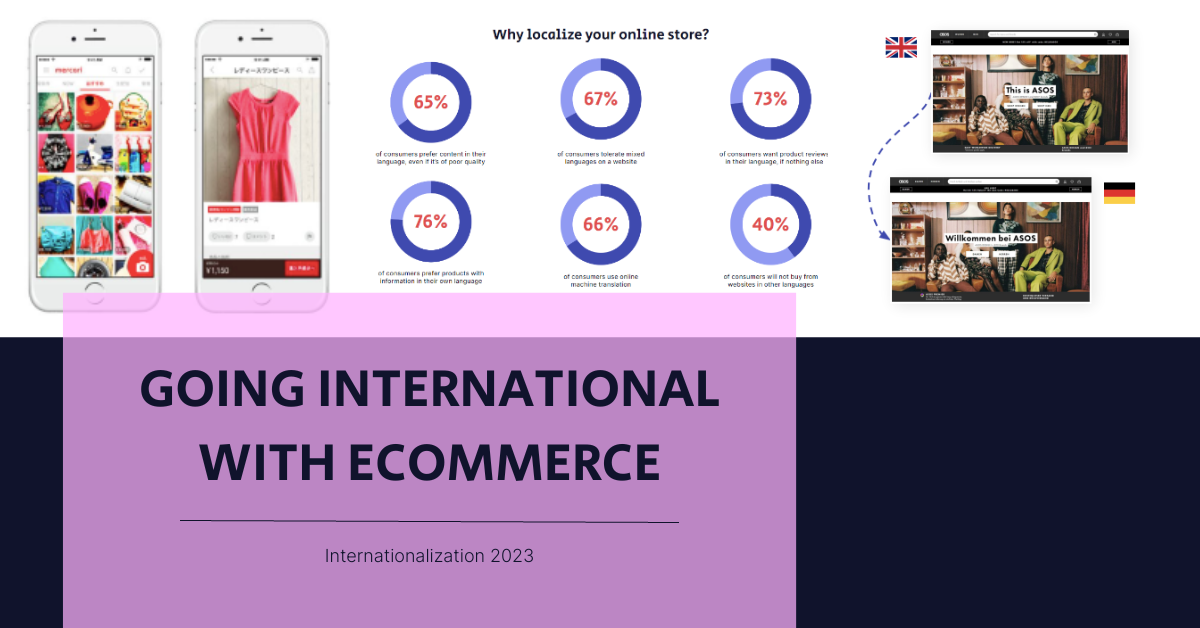Internationalization (i18n) is a significant step toward brand expansion in different countries, including preparing products, services, and internal operations for entry into global markets. The main objective of eCommerce internationalization is for the established design of a brand and its software product to support multiple languages, regional preferences, and cultural norms without significant changes to the code.
General overview
According to a study, over 70% of customers spend most of their time on websites in their language, and every dollar a business invests in a localization strategy generates $25 in profits.
Although internalization is initially unrelated to any translation, most companies need to translate their content into other languages for international markets (website localization).
Localization (l10n) is the actual process of adapting a previously internationalized product to a specific culture. The main objective of localization is to get an end product that feels local to the target market. In contrast to simple translation, localization takes a broader approach, including cultural adaptation.
Benefits of eCommerce internationalization
- Easier maintenance
- Increased market share
- International search presence
- Decreased cart abandonment
- Faster delivery
- Easier personalization
- Improved conversion rate
- Faster growth
Consumer expectations
While consumers may want the products or experiences on an English-language site, most still instead think, act, and buy in their language.
However, internationalization is more than just translation; it’s about cross-border purchasing behaviors. Privacy, payment options, delivery, and customs procedures are significant components of the internationalization strategy and can affect the customer’s online experience.
Main aspects to localize in an eCommerce store
- Product details & descriptions
- Keywords & SEO
- Multimedia & branding
- User reviews
- Payments & currency
- Customer support
Internationalization strategy that work’s today
These are the five main steps of a strong internationalization strategy:
- Competitor analysis and market research
- Researching international markets to pull data and understand target audience and customers
- Exploring key competitor websites
- Technical implementation
- Setting up the URL structure
- Content translation and localization
- Prioritizing content based on business goals
- Maintaining at least one social media page in the local language
- Localizing pictures, videos, graphs, SEO, product descriptions, branding, marketing, and customer support
- Localized mobile app
- Local UX/POS considerations
- Exploring legal requirements
- Calculating duties and taxes
- Showcasing shipping, duty, and import taxes
- Setting up currencies and payment methods
- Localizing inventory
- Optimizing shipping options
- Testing the process
We’ve succesfully applied these internationalization strategies for many of our global clients, including Sportland, Macron, and BUFF®.
If you’re interested in detailed steps for a successful eCommerce internationalization with solutions to common localization challenges, get your free copy of the research and guide below!
In this report, you will learn more about:
- eCommerce internationalization statistics
- Consumer expectations
- Internationalization strategies for 2023 with implementation milestones
- Market research tools
- eCommerce platforms globally
- Main internationalization problems and solutions
Interested in more market insights and predictions? Browse our collection of research papers on the latest trends and strategies in different industries. Request research if you don’t find your industry there. Download the research PDFs for free!



Share on: